As we contemplate Juneteenth 2024 and reprint this article from 2023 on the significance of the event to all in the Americas, let us not forget the legacy that binds us.
Today, thousands of migrants risk their lives coming to the U.S. They seek political asylum from violence, murder, and corruption in Central America. Most recently asylum seekers include Haitians, other South Americans, people from Asian countries, and more. Many come fleeing economic devastation from climate change which the U.S. and other developed countries cause but is felt disproportionately by the poor.
Let us celebrate Juneteenth acknowledging the ties that bind the “wretched of the earth”, “the criminals of want” from throughout the world, but especially in the Americas. Their struggle was forged from the beginnings of capitalism fueled by slavery and the slave trade to today’s migrants suffering displacement and abandonment at the hands of advanced capitalism.
Juneteenth is celebrated every year on or about June 19th to commemorate the end of the American Civil War and freedom for the former slaves in the entire country. It was proclaimed by Union General Granger in Galveston, Texas on June 19, 1865, two months after the war officially ended—a fact the slaves in Texas were unaware of until then, and that the slaveowners claimed they didn’t know. It also occurred more than 2 years after the Emancipation Proclamation made by Abraham Lincoln, which officially freed slaves liberated in the rebellious Confederates states, though not at the time in the border states that remained loyal to the Union.
What many people know and sense is that the legacy of slavery continues to the present day in the United States—whether it manifests itself by mass incarceration, police killings, the association of poverty, homelessness, and race, much worse maternal and infant mortality of blacks compared to whites, and a similar pattern of mistreatment of other racial and ethnic minorities, including Latinos.
Over 12 million Africans were enslaved and transported to the Americas between 1525 and 1866, packed like sardines in ocean-bound ships.
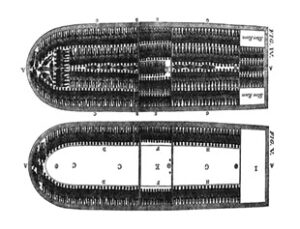
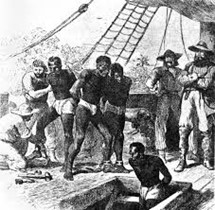
Of those brought to the Americas, a smaller percentage ended up in what would become the United States, some say less than 400,000, as demonstrated visually in the map.
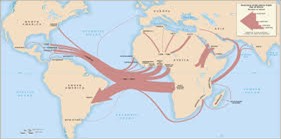
The reason so many Africans were enslaved and forcibly relocated to the Americas was that cheap and plentiful manual labor was needed to supply the raw materials Europe needed at the dawn of capitalism. The conquest and exploitation of the Americas killed 90% of the indigenous population, an estimated 55 million people between 1492 and 1600 due to genocidal violence and the inadvertent introduction of smallpox, measles, and influenza, to which the invaders had developed immunity.
In the 13 American colonies, color became the predominant feature of lifelong slavery. Initially, whites were enslaved until they paid off their transportation cost across the Atlantic—7 years of indentured servitude. Enslaved Native Americans ran away. Africans had nowhere to hide and were enslaved for life.
What few people know and appreciate is that African American history and the experience of nearly all who live in the Americas are integrally related, almost since the beginning of slavery in the Americas. This profoundly influences events today.
During the American Revolutionary War, the French army assisted the American colonists in their revolt against England. At the battle of Savannah, Georgia, a Haitian contingent under French authority aided the American colonists.
Later, several of the survivors were instrumental in the Haitian revolution against France, the first successful Latin American revolution, inspired by the ideals of the American war for independence. Efforts did not stop there. Simon Bolivar, lauded as the liberator of Latin America was sheltered and aided by Haiti in his long struggle for independence against Spain before final success.
 Mexico’s revolt against Spain occurred about the same time, inspired by shared yearnings for freedom, independence, and a better life. Dolores Hidalgo’s ” Grito de la Independencia” was answered by an army of mestizos, mulattos, blacks, and Indians. Pictured is Vicente Guerrero, the second President of Mexico, of African-Mexican descent. He is known for having ended slavery in Mexico in 1829, a full 36 years before the United States ended slavery following a bloody civil war.
Mexico’s revolt against Spain occurred about the same time, inspired by shared yearnings for freedom, independence, and a better life. Dolores Hidalgo’s ” Grito de la Independencia” was answered by an army of mestizos, mulattos, blacks, and Indians. Pictured is Vicente Guerrero, the second President of Mexico, of African-Mexican descent. He is known for having ended slavery in Mexico in 1829, a full 36 years before the United States ended slavery following a bloody civil war.
Later, the fledgling republic of Mexico invited Americans to settle in Texas, promising not to introduce slavery there. This promise was quickly broken, which led first to war with Mexico, and eventually to Mexico losing half of its territory to the United States, starting first with the loss of Texas. In an effort to maintain control of the Capitol in Washington, DC slaver interests rushed to introduce slavery in as many states as possible in order to outnumber free states. Slavers considered seizing more land from Mexico, but the American Civil War interrupted that plan.
Once slavery was firmly established in Texas, a little-known fact was that an underground railroad developed with runaway slaves primarily from Texas and Louisiana fleeing south of the border and being protected by Mexico’s acceptance of them and its opposition to slavery. The actual number of escaped slaves is not known but has been estimated at over 10,000.
So, as we unite to celebrate Juneteenth, let us recognize that our roots run deep and long. Our yearnings for freedom and a better life bind us together. We can make the dreams and aspirations of our forefathers and mothers a reality.
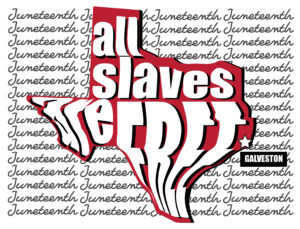
El Tribuno del Pueblo brings you articles written by individuals or organizations, along with our own reporting. Bylined articles reflect the views of the authors. Unsigned articles reflect the views of the editorial board. Please credit the source when sharing: tribunodelpueblo.org. We’re all volunteers, no paid staff. Please donate at http://tribunodelpueblo.org to keep bringing you the voices of the movement because no human being is illegal.


